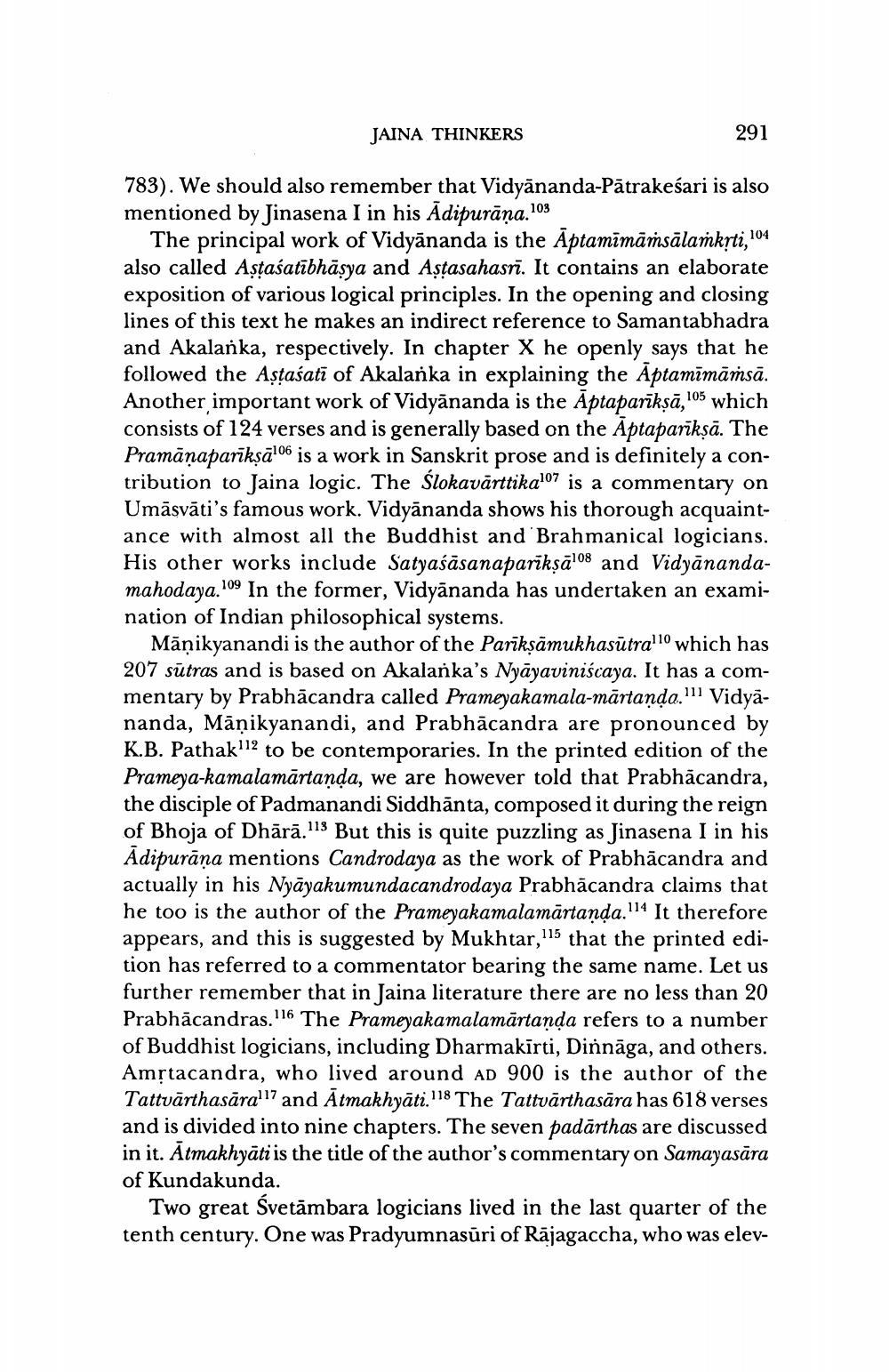________________
JAINA THINKERS
291
783). We should also remember that Vidyānanda-Pātrakeśari is also mentioned by Jinasena I in his Ādipurāņa.103
The principal work of Vidyānanda is the Aptamīmāṁsālamkşti,104 also called Aștaśatībhāşya and Astasahasrī. It contains an elaborate exposition of various logical principles. In the opening and closing lines of this text he makes an indirect reference to Samantabhadra and Akalanka, respectively. In chapter X he openly says that he followed the Asțaśatī of Akalanka in explaining the Aptamīmāṁsā. Another important work of Vidyānanda is the Āptaparīkņā, 105 which consists of 124 verses and is generally based on the Aptaparīksā. The Pramāņaparīksā 06 is a work in Sanskrit prose and is definitely a contribution to Jaina logic. The slokavārttika_07 is a commentary on Umāsvāti's famous work. Vidyānanda shows his thorough acquaintance with almost all the Buddhist and Brahmanical logicians. His other works include Satyaśāsanapariksā08 and Vidyānandamahodaya.109 In the former, Vidyānanda has undertaken an exami nation of Indian philosophical systems.
Mānikyanandi is the author of the Parīksāmukhasūtra 10 which has 207 sūtras and is based on Akalanka's Nyāyaviniscaya. It has a commentary by Prabhācandra called Prameyakamala-mārtaņda.'11 Vidyānanda, Māņikyanandi, and Prabhācandra are pronounced by K.B. Pathak 12 to be contemporaries. In the printed edition of the Prameya-kamalamārtanda, we are however told that Prabhācandra, the disciple of Padmanandi Siddhānta, composed it during the reign of Bhoja of Dhārā.113 But this is quite puzzling as Jinasena I in his
dipurāņa mentions Candrodaya as the work of Prabhācandra and actually in his Nyāyakumundacandrodaya Prabhāçandra claims that he too is the author of the Prameyakamalamārtanda. 114 It therefore appears, and this is suggested by Mukhtar, 115 that the printed edition has referred to a commentator bearing the same name. Let us further remember that in Jaina literature there are no less than 20 Prabhācandras. 116 The Prameyakamalamārtanda refers to a number of Buddhist logicians, including Dharmakīrti, Dinnāga, and others. Amrtacandra, who lived around AD 900 is the author of the Tattvārthasārall7 and Atmakhyāti. 118 The Tattvārthasāra has 618 verses and is divided into nine chapters. The seven padārthas are discussed in it. Atmakhyāti is the title of the author's commentary on Samayasāra of Kundakunda.
Two great Svetāmbara logicians lived in the last quarter of the tenth century. One was Pradyumnasūri of Rājagaccha, who was elev




